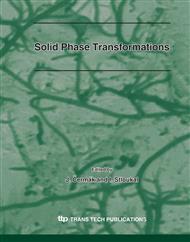p.165
p.175
p.181
p.189
p.193
p.201
p.209
p.241
p.283
Assessment of Heterogeneity of Welded Joint of Two Different Metals by Modeling of Diffusion of Substitution Elements
Abstract:
The paper presents original methodology for assessment of heterogeneity of welded joint by measurement of concentration profiles of substitution elements in three straight lines in a plane perpendicular to the weld interface. The weld joint is formed by low-alloyed CrNiMoV steel and low-alloy silicon steel. Three concentration profiles are evaluated by modeling of diffusion based on solution of the 2nd Fick’s law. Primary goal of evaluation consists in assessment of chemical heterogeneity in the narrow area on both sides of the weld joint on the basis of their mutual position. Experimental data are optimized by original adaptation of the Levenberg–Marquardt’s algorithm of non-linear regression. Modeling comprises also determination of diffusivities and graphical representation of their temperature dependencies. The paper deals with diffusion of silicon as an example of many other investigated elements.
Info:
Periodical:
Pages:
193-200
Citation:
Online since:
March 2008
Price:
Сopyright:
© 2008 Trans Tech Publications Ltd. All Rights Reserved
Share:
Citation:


